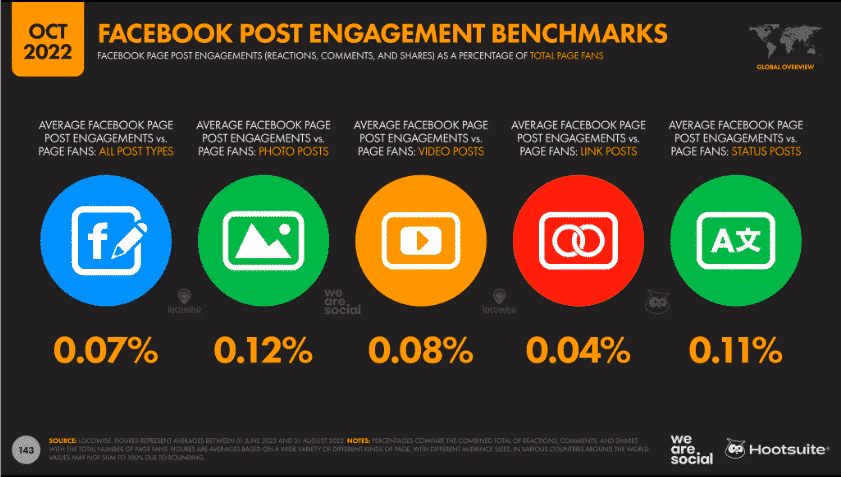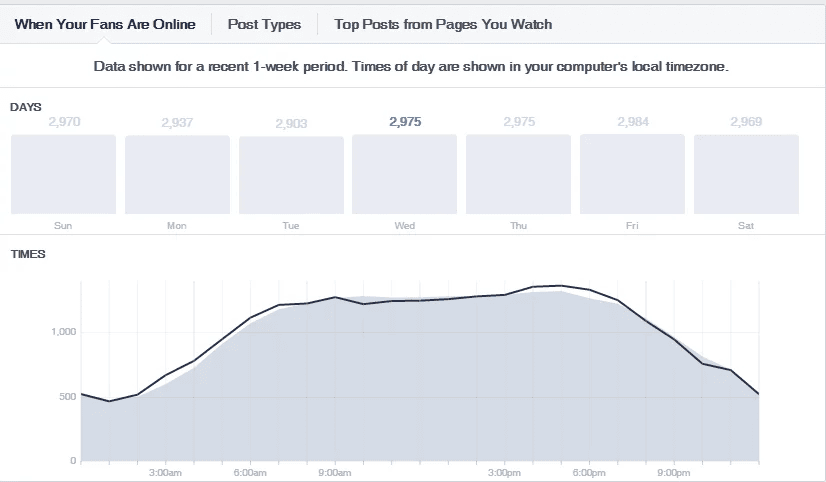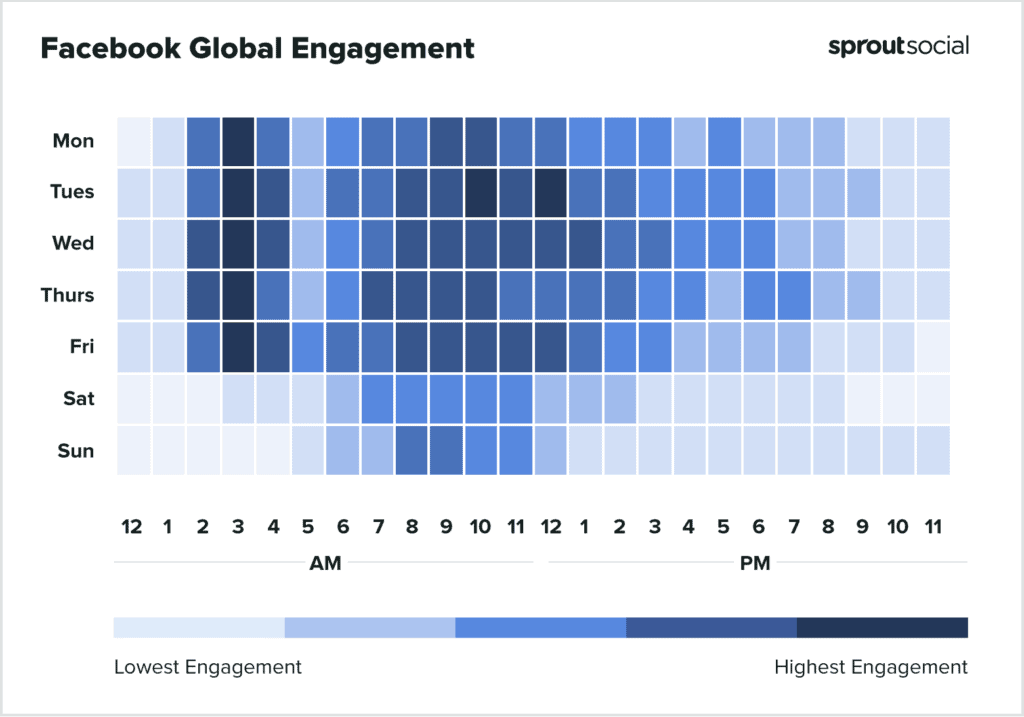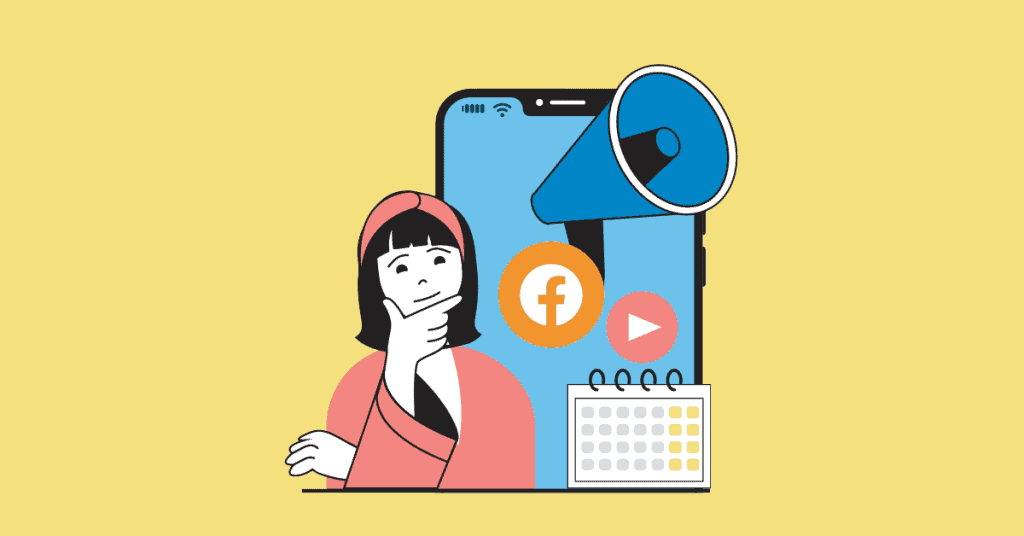Are you tired of posting on Facebook and getting little engagement? Or maybe you’re just not sure when the best time to post is.
In this article, we’re going to explore the best time to post on Facebook and why it matters.
Let’s face it, whether you’re a business or an individual, Facebook is a powerful tool for connecting with people.
But with so many users and so much content, it can be hard to cut through the noise.
That’s why understanding the best time to post on Facebook is essential to maximize your reach and engagement.
Why Timing Matters on Facebook
When it comes to Facebook engagement, timing is everything. Facebook employs an algorithm to determine which posts will show in users’ news feeds, and one of the parameters considered by the algorithm is the popularity of a post in the first few hours after it is published.
Posting when your target audience is most engaged on the site might help your message receive instant engagement, increasing its total reach. According to research, time has a big impact on post engagement and reach.
Therefore, if you want to maximize the impact of your Facebook posts, it’s essential to pay attention to the timing of your posts.
Factors to Consider When Posting on Facebook
The optimal posting time on Facebook can be influenced by several factors, including audience demographics and behavior, content type, industry, post frequency, audience engagement, and external events.
By considering these factors, you can determine the best times to post and improve your chances of reaching your target audience when they are most active on the platform.

Image from hootsuite.com
Here are some essential factors to keep in mind:
Your Audience Demographics, Behaviors, and Time Zones
To effectively target your audience on Facebook, it’s crucial to understand their demographics, behaviors, and time zones. Demographic information such as age, gender, and location can provide valuable insights into your audience’s preferences and habits.
For example, if your audience is primarily composed of working professionals, you may want to focus your posts during their lunch breaks or after work hours. Additionally, by analyzing your audience’s behavior, you can identify patterns in their engagement with your posts and tailor your content to better suit their interests.
Taking into account your audience’s time zones is also essential to ensure that your posts are seen when they are online and active on Facebook.
Neal Taparia, from Play Minesweeper explains, “We always thought the evening would be the best time to post on Facebook because we assumed people naturally played our minesweeper game then. It turns out that most of our users play during work hours, and posting then increases our engagement.”
By aligning your content with your audience’s behavior and time zones, you can increase the chances of your posts being seen and engaged with, ultimately leading to better results for your social media efforts.
Industry-Specific Considerations
When it comes to choosing the optimal time to post on Facebook, industry-specific aspects can also play a big impact. Peak hours for social media engagement vary by industry, and can be impacted by factors such as target audience, content type, and industry trends.
B2B companies, for example, may find that posting during business hours on weekdays produces greater results because their target audience is often engaged during those times. B2C enterprises, on the other hand, may find it easier to post during the nights and weekends, when their target audience has more free time.
By understanding the patterns and trends within your industry, you can tailor your posting schedule to maximize engagement and ensure that your content is being seen by the right people at the right time.
Facebook Insights and other analytics tools
Facebook Insights is an extremely useful tool that gives a variety of information to assist you in making educated decisions regarding your Facebook strategy. You may track the performance of your posts and obtain insights into your audience’s activity, engagement, and demographics with Facebook Insights.
For example, you can see how many people have viewed and interacted with your articles, as well as the times of day when your audience is most active and the sort of material that best connects with them. By evaluating this data, you can find the optimal times to publish on Facebook, make a schedule with a timeline creator, and adjust your content to the tastes of your target audience.
Other analytics tools, such as finding your top-performing content, assessing your engagement rate, and monitoring your social media metrics, can also give more insights into your social media success. By utilizing these tools, you may enhance your social media approach and obtain better Facebook results.

Image from ignitevisibility.com
Best Times to Post on Facebook
It’s important to understand that there is no one-size-fits-all answer when it comes to finding the best time to post on Facebook. However, there are some general best times to post based on industry and audience that you can use as a starting point.
By understanding your audience and industry-specific trends, you can identify the best times to post for your brand.

Image from sproutsocial.com
Peak Times for Facebook Engagement and Reach
Peak periods for Facebook engagement and reach refers to the times of day when the majority of people are online. This is when your posts are most likely to be noticed and interacted with.
Peak periods might differ depending on your audience’s demographics, behaviors, and time zones, as well as your industry. Yet, the optimum times to post on Facebook throughout the week are often mid-morning and mid-afternoon.
Most people are checking their social media accounts during their breaks from work or school. Posting during off-hours, such as late at night or on weekends, may still yield engagement, but to a lesser degree.
When to Post on Facebook
When considering the best time to post on Facebook, it’s important to keep in mind that optimal posting times can vary based on your audience’s industry, location and habits. For example, if your audience is predominantly in a different time zone, you may need to adjust your posting times to align with their schedule.
Here are some factors to consider:
By Industry
When it comes to determining the best time to post on Facebook, industry plays a crucial role. Different industries have different peak times for social media engagement.
For example, if you’re in the technology industry, you might find that posting during weekdays around noon and 5 PM is the optimal time for engagement. On the other hand, if you’re in the retail industry, posting during weekends around 12 PM and 2 PM might yield better results.
Understanding the trends and patterns of your industry can help you make informed decisions about when to post and maximize your reach and engagement.
By Target Audience
When it comes to posting on Facebook, it’s important to consider your target audience. Depending on their age, gender, location, and other demographic factors, their engagement and activity on the platform may vary.
For example, if your target audience is primarily students, you might find that they are most active on Facebook during evenings and weekends when they have more free time. On the other hand, if you’re targeting working professionals, posting during business hours on weekdays might be more effective.
Understanding your target audience and their habits can help you determine the best times to post and maximize engagement.
For International Audience
When posting on Facebook for an international audience, keep time zone differences in mind. You should post when your target audience is most likely to be online, regardless of where they are in the world.
Consider posting several times to accommodate everyone if your target audience covers numerous time zones. Use Facebook Insights and other analytics tools to gain a better knowledge of your audience’s location and activity trends.
This data can assist you in determining the optimum times to post for greatest interaction and reach.
Testing and Experimentation
If you want to optimize your posting time on Facebook, testing and experimentation are essential. Every account is different, and what works for one may not work for another. A/B testing is a common method used to identify the optimal posting time.
This includes posting at several times of the day and analyzing interaction levels to discover the ideal time for your audience. You may also experiment with different types of content and post frequency to find what works best for your audience.
It is critical to track and evaluate the outcomes of your testing to determine what is working and what needs to be improved. Facebook Insights and other analytics tools can assist you in determining which posting hours and techniques yield the best results for your account.
Other Tips for Maximizing Facebook Engagement
If you want to maximize your Facebook engagement, there are several Facebook etiquette rules you can try. Here are some tips for improving your performance on the platform:
- Use visual content: Images and videos tend to perform better on Facebook than plain text posts. Incorporate eye-catching visuals into your posts to capture your audience’s attention.
- Craft engaging copy: Your captions and headlines should be attention-grabbing and compelling. Use persuasive language to encourage your followers to take action.
- Include calls-to-action: Encourage your audience to engage with your content by including calls-to-action in your posts. For example, you could ask them to like, share, or comment on your post.
- Monitor and respond to comments and messages: Engage with your followers by responding to their comments and messages. This can help build relationships and improve your overall engagement on the platform.
Frequently Asked Questions
Now, let’s take a look at some frequently asked questions related to the best time to post on Facebook that we haven’t covered in this article.
Aside from time, is there a particular day of the week that is best for posting on Facebook?
Yes, there are certain days of the week that are generally considered to be better for posting on Facebook. According to studies, mid-week tends to be the most active time on Facebook, with Wednesday being the top day for engagement.
However, it’s important to keep in mind that the best day to post can vary depending on your specific audience and industry. It’s also worth experimenting with different days to see what works best for your business or personal account.
Does the type of content I post impact the best time to post?
Yes, the type of content you post can impact the best time to post on Facebook. For example, if you are posting about breaking news or time-sensitive information, you may want to post immediately rather than waiting for a specific time.
On the other hand, if you are sharing more evergreen content, such as educational articles or product updates, you may have more flexibility in terms of when to post. Additionally, certain types of content, such as video and live streams, tend to perform better during specific times of the day.
It’s important to experiment with different types of content and posting times to find what works best for your audience.
Are there any tools or apps that can help me determine the best time to post on Facebook?
Yes, there are many tools and apps available that can help you determine the best time to post on Facebook. For example, you can use Facebook Insights, which provides data about your audience’s behavior and engagement.
You can also utilize social media management software, such as Hootsuite or Buffer, which can analyze your social media data and suggest the best time to post. These tools can also help you schedule your posts for the optimal time, so you don’t have to worry about manually posting at a specific time.
Key Takeaways
In summary, timing plays a crucial role in maximizing your Facebook engagement. The optimal posting times for Facebook can vary based on industry, audience demographics, and location.
Facebook Insights and other analytics tools are valuable resources that can help you determine the best time to post and track your social media performance. Testing and experimentation are also essential to identify the optimal posting time for individual accounts.
In addition to timing, visual content, engaging copy, and calls-to-action are all strategies that can improve Facebook engagement. It’s also crucial to monitor and respond to comments and messages to build relationships with your audience.
Overall, the key takeaways are that a thoughtful approach to timing and engagement strategies can significantly impact your Facebook performance.
By understanding your audience, testing and experimenting, and focusing on creating engaging content, you can optimize your Facebook presence and build a stronger relationship with your followers.
Remember that what works for one account may not work for another, so it’s important to tailor your approach to your specific audience and goals.


